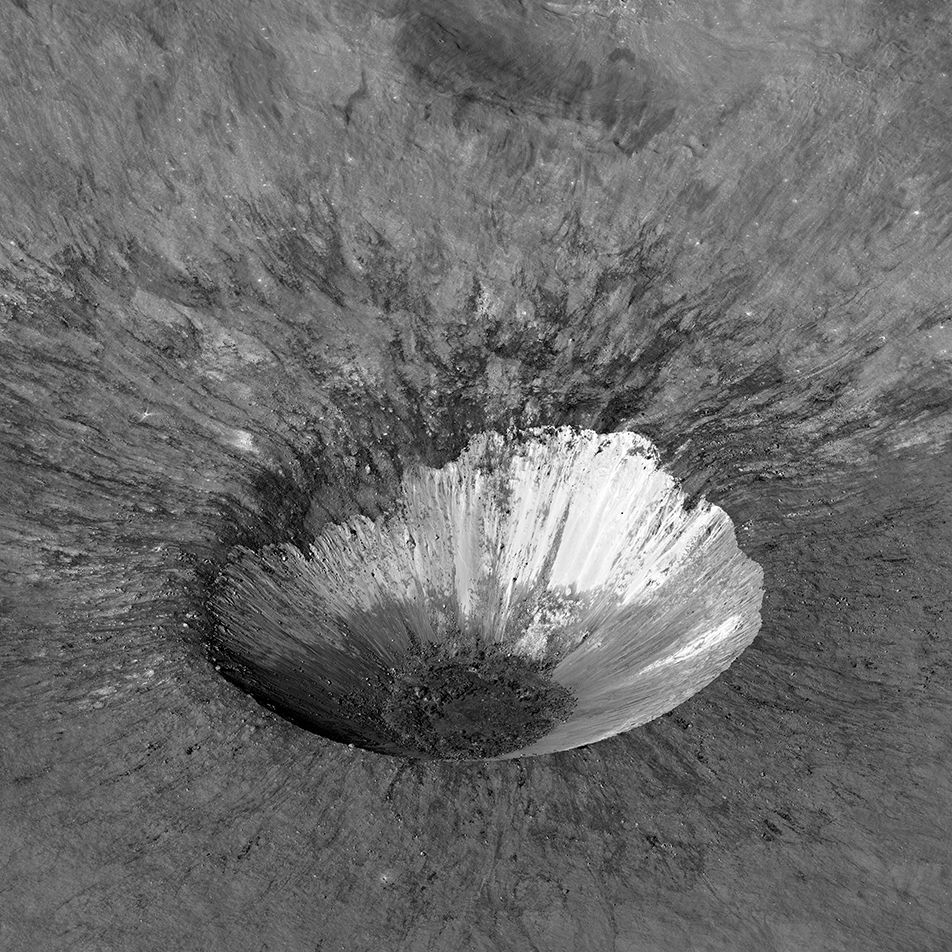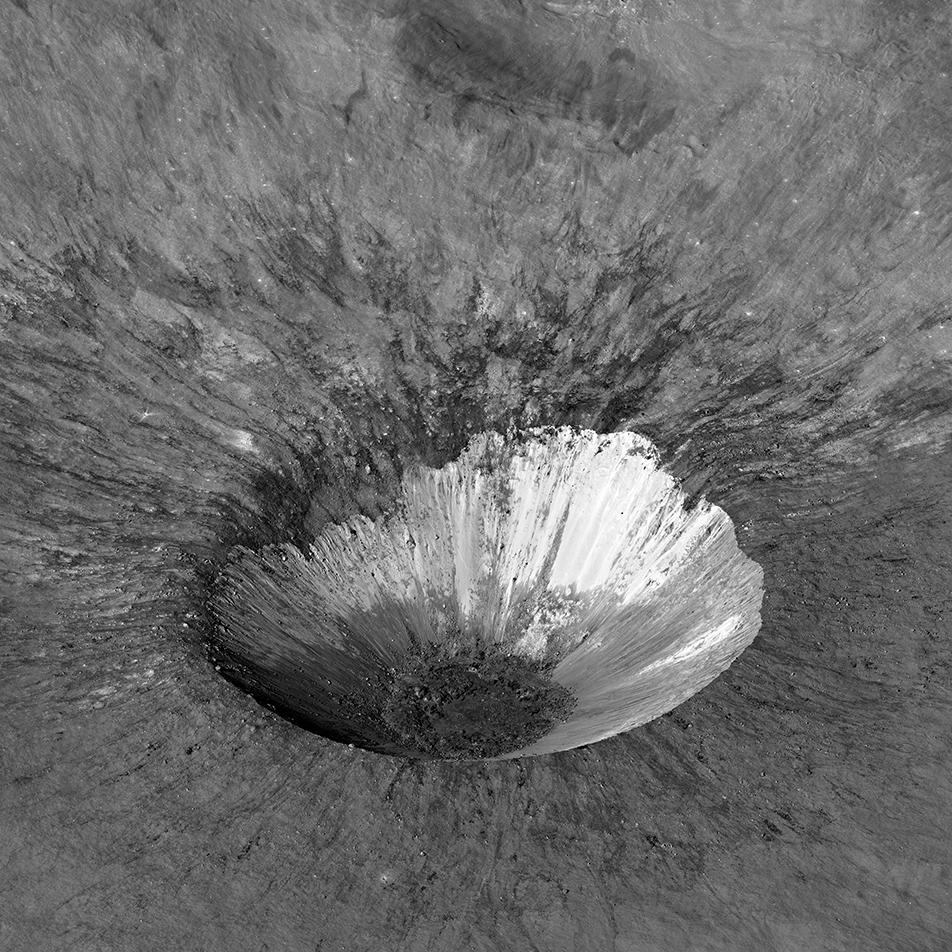Hell Q Crater

| Credit | NASA/GSFC/Arizona State University |
|---|---|
| Language |
|
The Moon's Hell Q crater, as imaged by the Lunar Reconnaissance Orbiter Camera (LROC) camera aboard NASA's Lunar Reconnaissance Orbiter spacecraft, which is now studying the Moon. The crater is about two miles across (3.4 kilometers).
Some details of the impact process are still not well known. However, LROC images of very young craters are giving scientists new insights! In this image one can see delicate black streamers that landed on top of the main ejecta deposit. Either the black material was ejected late in the process or had a relatively high ejecta angle, thus taking longer to go up and come down relative to the main body of ejecta. What is that black material? Most likely it is impact melt that cooled so fast that most turned to glass rather than minerals. Right along the rim of the crater you can see small tongues of the black material, indicating that it was a fluid when emplaced (and now hardened into glass). Its low reflectance is caused by the light-absorbing properties of glass.
By the way, the crater takes its name from the Hungarian Astronomer Maximilian Hell, not that hot place.

